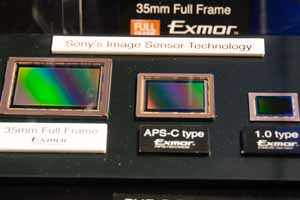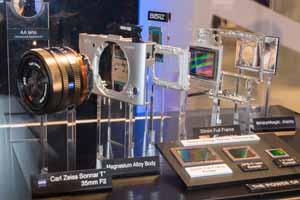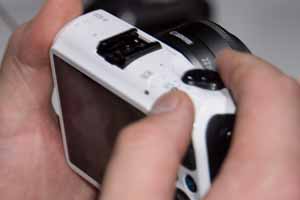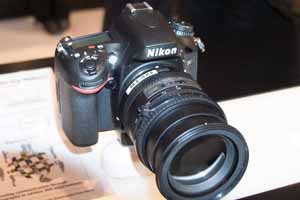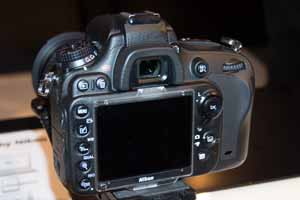Online Magazine
Recent Posts
- Safeguard your Cellphone Photos
- Black & White to Color – Instantly
- Wearing Many Hats
- Video Roundup
- Rescuing Your Blurry Pictures
- Showing Their Age
- What is Your Angle?
- Panorama Photos
- Humorous Photos
- Close Ups
- Fisheye Pictures
- Photo Antiquities
- Printing Big
- Appreciating Scale
- Celebrity Sightings
Tags
More Places to Go
- Free "How-To" Books “How To” books for popular cameras 0
- Vist Us on Facebook keep in touch with us on Facebook 2
Archives
- July 2023 (1)
- March 2023 (2)
- February 2023 (1)
- December 2022 (1)
- October 2022 (1)
- September 2022 (8)
- August 2022 (9)
- July 2022 (1)
- June 2022 (1)
- June 2021 (1)
- May 2021 (1)
- March 2021 (5)
- February 2021 (4)
- January 2021 (2)
- April 2019 (1)
- March 2019 (1)
- February 2019 (1)
- October 2018 (2)
- April 2018 (1)
- March 2018 (4)
- February 2018 (1)
- November 2017 (1)
- August 2017 (1)
- June 2017 (1)
- April 2017 (1)
- March 2017 (5)
- February 2017 (2)
- January 2017 (1)
- October 2016 (1)
- September 2016 (1)
- August 2016 (1)
- July 2016 (1)
- May 2016 (1)
- April 2016 (1)
- March 2016 (2)
- February 2016 (1)
- January 2016 (2)
- December 2015 (1)
- November 2015 (1)
- October 2015 (3)
- April 2015 (1)
- March 2015 (5)
- February 2015 (1)
- January 2015 (4)
- December 2014 (2)
- November 2014 (5)
- October 2014 (2)
- September 2014 (1)
- August 2014 (2)
- July 2014 (1)
- May 2014 (1)
- April 2014 (5)
- March 2014 (5)
- December 2013 (2)
- November 2013 (18)
- October 2013 (1)
- September 2013 (1)
- August 2013 (1)
- July 2013 (1)
- June 2013 (3)
- May 2013 (1)
- April 2013 (2)
- March 2013 (1)
- February 2013 (1)
- January 2013 (1)
- December 2012 (1)
- November 2012 (2)
- October 2012 (2)
- September 2012 (5)
- August 2012 (2)
- July 2012 (1)
- June 2012 (1)
- May 2012 (1)
- April 2012 (4)
- March 2012 (1)
- February 2012 (1)
- January 2012 (3)
- December 2011 (1)
- November 2011 (3)
- October 2011 (1)
- September 2011 (2)
- August 2011 (2)
- June 2011 (3)
- May 2011 (4)
- April 2011 (8)
- March 2011 (8)
- February 2011 (10)
- January 2011 (6)
- December 2010 (11)
- November 2010 (14)
- October 2010 (6)
- September 2010 (12)
- August 2010 (2)
- July 2010 (4)
- June 2010 (3)
- May 2010 (1)
- April 2010 (1)
- March 2010 (2)
- February 2010 (1)
- January 2010 (1)
- December 2009 (1)
- November 2009 (2)
- October 2009 (2)
- September 2009 (1)
- August 2009 (3)
- July 2009 (2)
- June 2009 (1)
- May 2009 (2)
- April 2009 (1)
- March 2009 (2)
- February 2009 (1)
- January 2009 (3)
Parade of New Cameras
01st October 2012
Photokina Part 1 – the new stuff
Every two years the photographic industry gathers at Photokina to introduce its new products.
The event takes place over a week period in early September at the huge Koelnmesse Exhibition Center in Cologne, Germany.
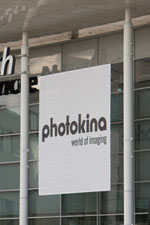 |
 |
This year I again attended Photokina along with some 150,000 other visitors and walked the aisles of the messe’s ten huge halls to see the new photographic and imaging products from more than 1500 vendors.
What follows is a condensed report of those products that were of particular interest to me.
Prior to the start of Photokina, many of the photo manufacturers announced new products that would be on display at the expo. Like many others, I was curious to touch and feel some of these products and these were the ones that I gravitated to when I reached Cologne.
|
Canon 6D Next up was the Canon booth where I saw the newly announced 6D.
|
|||||||||||||||||||||||||||||||
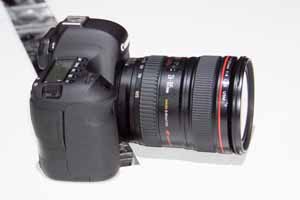 The 6D has a footprint and feel similar to Canon’s 7D, only this model has a full-frame sensor. |
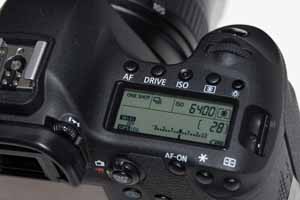 Here you can see that both GPS and Wi-Fi are built into the 6D |
||||||||||||||||||||||||||||||
| Although the prices of tge 5DMkIII and the new 6D are quite disparate, here are the major feature differences between these two models:
Perhaps the most significant features of the 6D besides the full-frame sensor are the addition of both GPS and Wi-Fi. GPS automatically adds location information to the images. This is especially useful to landscape photographers who can now precisely identify the location at which a photograph was captured. Adding Wi-Fi capability to the camera again provides automatic backup and rapid sharing of images through online smart devices. Two other features which are new in this model: 1) in-camera HDR which combines bracketed exposures to yield images which encompass wide exposure levels. 2) multiple exposure capability to superimpose up to nine separate images onto single frame. Similar to the 5D Mk III, neither have a built-in flash but reply on external flash units. The staff at the Canon booth indicated that the 6D will go on sale in December of this year. |
|||||||||||||||||||||||||||||||
|
Sony Alpha 99 Although Sony is a distant third to Canon and Nikon in terms of high end market share, this company has been delivering products with innovative features.
|
||||||||||||||||||||||||||||||||||
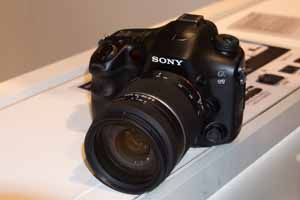 |
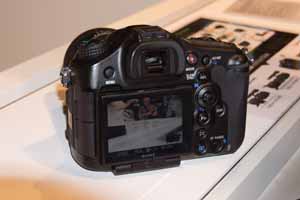 |
|||||||||||||||||||||||||||||||||
| Sony’s new Alpha 99 is their first full-frame camera using its unique translucent mirror. Instead of a conventional mirror which flips out of the light path when the shutter is depressed, the translucent mirror remains stationary allowing light to pass through to the sensor. This design provides continuous autofocus and exposure and high speed capture.
Below I’ve compared the new Alpha 99 with the Alpha 77, which is Sony’s top if the line APS-C size cameras in the translucent mirror series.
The Alpha 99 uses a unique dual phase detect system is designed to provide continuous and precise autofocus. Other features carried over from earlier Sony’s translucent mirror cameras are sweep panorama, automatic HDR and multi-frame noise reduction. The Alpha 99 is due to begin shipments in early November. |
||||||||||||||||||||||||||||||||||
|
Sony RX-1 I didn’t expect to see a camera such as this from Sony. The RX-1 is compact camera with a full-frame sensor and a non-removable lens. It looks as if Sony has identified a market of well-to-do photo enthusiasts that can afford $2800 for a camera with a 24mp full-size sensor and fast but fixed focal length Zeiss 35mm f/2 lens. You’ll have to compose your subjects with the 3″ screen unless you purchase either the optical or electronic viewfinder.
|
|
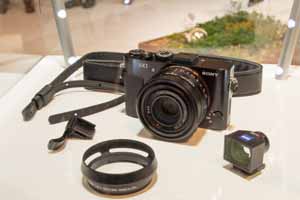 |
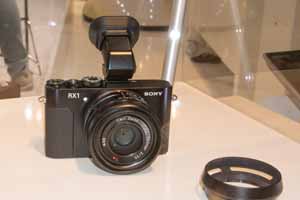 |
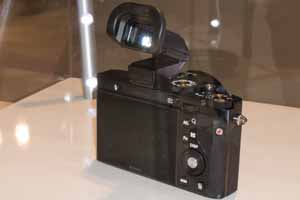 with optional electronic viewfinder |
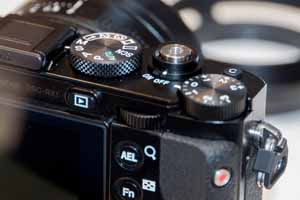 convenient settings with multiple dials |
|
All of the RX-1 samples were firmly locked behind glass at Photokina so I wasn’t able to have a hands-on demonstration. Of course Zeiss is noted for its superior lenses so coupled with the same full-frame sensor used in the Alpha 99, we can expect this camera to produce remarkable photographs. The expected availability date of the RX-1 is late December.
|
|
This concludes the coverage of the new full-frame sensor equipment from Photokina.
Coming up in Part 2 of our Photokina coverage are the compact MILC cameras. We hope to see you back here soon.
Written by Arnie Lee
Shooting for Myself vs Shooting for Others
29th June 2012
Simply put, my picturetaking falls into one of two categories: photos taken for “others” and photos taken for personal use.
Photos that I take for others are usually jobs in which the style of the photos is dictated by the needs and desires of the client. These may be a paying client or a freebie client such as a daughter’s birthday party or a sister’s passport photo. She may need a business head shot or he may want an illustrative photo of his industrial machine. A group may want me to photograph an evening event, a restaurant desires closeups of prepared dishes for its new menu or a school a recording of the championship basketball game. Regardless of whether it is a paying or a free transaction, the client generally has a lot of input as to how the completed photos will serve the end goal.
On the other hand, when I take photos for personal use I’m the client. I am free to shoot however, whereever and whatever I like. And as you might expect, this is where I feel the greatest freedom.
While it’s exciting to go on a special outing dedicated to photography, it’s not often that I can squeeze the time into my somewhat hectic schedule. But by keeping a camera nearby, I make it a habit of looking for quick opportunities to sneak in a picture of two.
I get a lot of pleasure photographing “everyday” things such as kids, pets, garden and the like. These are subjects that are close by so I don’t have to make special arrangements to shoot them.
|
|
|
 |
I get a big kick taking pictures of the grandkids.
Here’s one that’s learning to eat her spaghetti elegantly. |
|
|
|
 |
This pet is part of the family.
I caught him as he was taking a breather after running his head off for the past 30 minutes. |
|
|
|
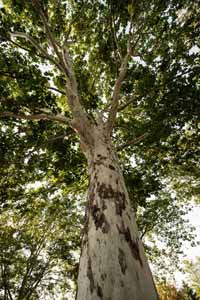 |
Sometimes it pays to look up(ward).
This is a majestic sycamore tree at a nearby home. It looks naked because it sheds it bark regularly. |
|
|
|
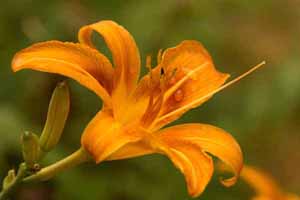 |
These colorful day lilies arrive each Spring in our front yard.
I shot this one soon after an early morning shower left a few drops. |
|
|
|
 |
From a distance the furrows in the field look boringly straight and parallel.
Closer up I can see that the terrain isn’t flat as a pancake and makes for a nice visual. |
|
|
|
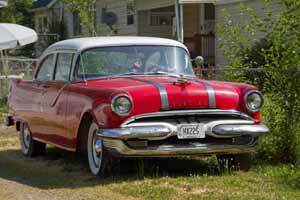 |
You may be surprised by the things that you can spot around the neighborhood.
This vintage auto was sitting in an empty lot. Great color and great restoration. |
I’ll leave you with this reminder: When you’re the client, you have the freedom to shoot whenever and whatever you’d like. Don’t fall into the “no time today” trap. Nor should you believe that the camera is only for special occasions. With a little preparation (i.e. keeping your camera close by), you can surely find a few everyday subjects to photograph.
Written by: Arnie Lee
About this Photo – an Army Story
29th April 2012
Dad and World War II
This article is the another in a series of articles that I’ve called “About this photo” to draw attention to a few of those memorable photos that may be hiding in a shoebox or on your hard drive.
Shortly after World War II broke out, a group of U.S. military recruiters visited New York City’s Chinatown. They were forming an all-Chinese battalion to serve in the China, Burma, India theater. Dad was among the hundreds of recruits who volunteered (including three other men who would later become his brothers-in-law after the war).
Of course, Dad told us many stories about his early life. One of his stories took place during their advanced training at Camp Crowder, Missouri. Tired of eating the army-supplied mess, he and a few of the soldiers went into the nearby town to buy fresh poultry and groceries to prepare their own meals. Some of the townspeople were taken aback by these Chinese soldiers marching into town – they thought they were being invaded by the Japanese!
Soon they traveled by train to the West Coast for deployment to the Asian front. Dad said that the military was experimenting with a new transportation method. Instead of sending groups of ships in convoys, they were using unescorted liberty ships to stealthily avoid the Japanese navy. Their battalion was placed on one of three liberty ships which would leave Wilmington, CA bound for Calcutta, India a few days apart. Dad was on the second ship, the SS David Gaillard. As it turned out, the first and third ship were torpedoed by Japanese submarines and never made it to India.
|
As part of the 987th Special Signal Operations Company, they were to travel from Calcutta to Kunming, China to support General Clair Chennault and his Fourteenth Air Force “Flying Tigers”. To reach Kunming they would travel on roads though the Himalayas. On several occasions Dad would mention the Burma Road on which the soldiers traveled to cross the mountains. He described the roads as being so steep, treacherous and narrow that if one of the vehicles became disabled they would have to push it over the cliffs so that the other vehicles could pass. Dad’s description has remained in my mind for many decades. Last week I unexpectedly received an email from a friend from my high school days. I remembered that Ann’s father was the the noted photographer Arthur Rothstein who had a long and distinguished career as a photojournalist, editor and director of photography, teacher and mentor. His iconic images of the rural America are well-known. Annie’s email had me browsing through her dad’s collection where I stumbled across a group of photos in which he documented the war effort in the China, Burma, India theater. His photo perfectly captures the image that Dad had verbally drawn in my mind for so many years. Seeing the stark road snaking its way up the mountain was enough of an impetus for me to write this story. Thanks to Annie and many thanks to her father. |
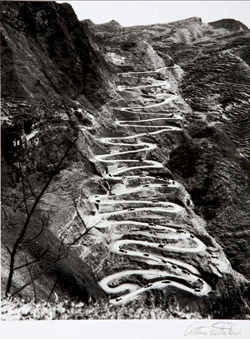 |
|
Like most other World War II military units, the Fourteenth Air Force has held many reunions for their members. The 55th Anniversary Reunion was held in 1997 and included the veterans that served in the China, Burma, India theater during World War II. In the reunion program guide, I found this family photo. These four standing men are my father and his three brothers-in-law whom I referred to earlier. They are my uncles having married three of my mother’s sisters. And all four of served as part of the CBI theater. |
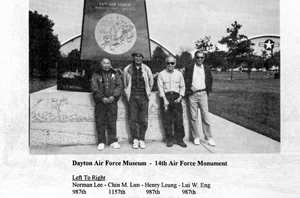 |
This short story illustrates the reason that photographs matter to me. These two photos are valued keepsakes.
There’s a wonderful story behind many photographs. It’s not just the image, it’s the memories and emotions that accompany the image that matter.
To see Arthur Rothstein’s work, please visit his archives.
Written by Arnie Lee
« Older Posts — Newer Posts »
